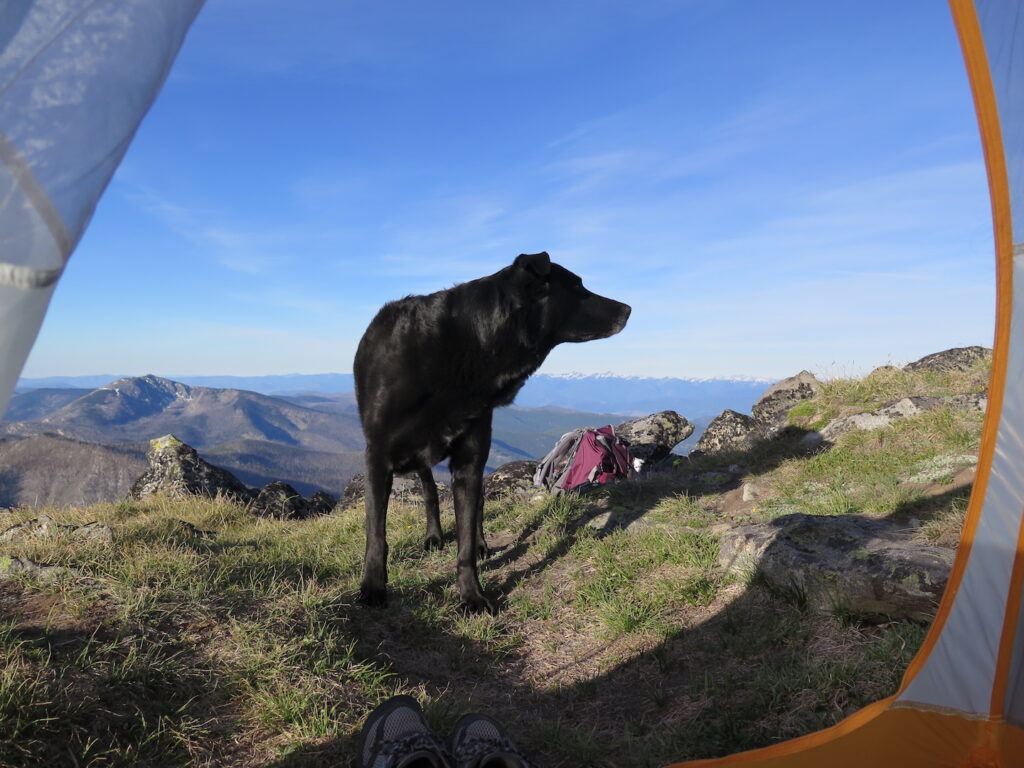For nearly 12 years my crazy Jake dog and I have been hiking, running, mountain biking, car camping, backpacking, and even ski touring! Overnights with friends are fun, but backpacks with Jake dog have a special place in my heart. I think back to some of our first trips and how disorganized and crazy they were.
Since then, Jake and I have had single night adventures and multi-day backpacks all over Washington and even the Sawtooths of Idaho. We’ve learned a lot and are here to share our tips and tricks for making sure you and your dog have a fantastic backpacking experience!
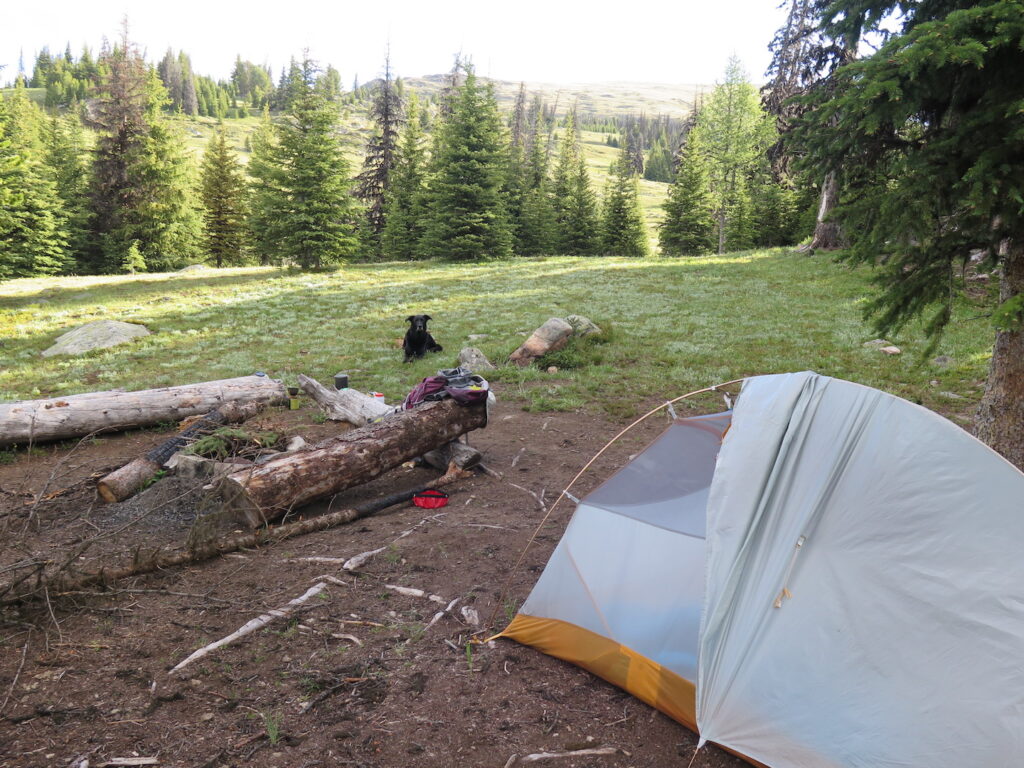
Preparation
Trail etiquette. Whether or not you’re on leash or off, your dog should be under your control. Your dog should always listen and look to you about how to proceed. Don’t assume other trail dogs are friendly! Ask before letting your dog approach. Keep your dog on the trail in fragile environments.
If your dog barks excessively, consider training before taking them out for an overnight getaway where others might be disturbed.
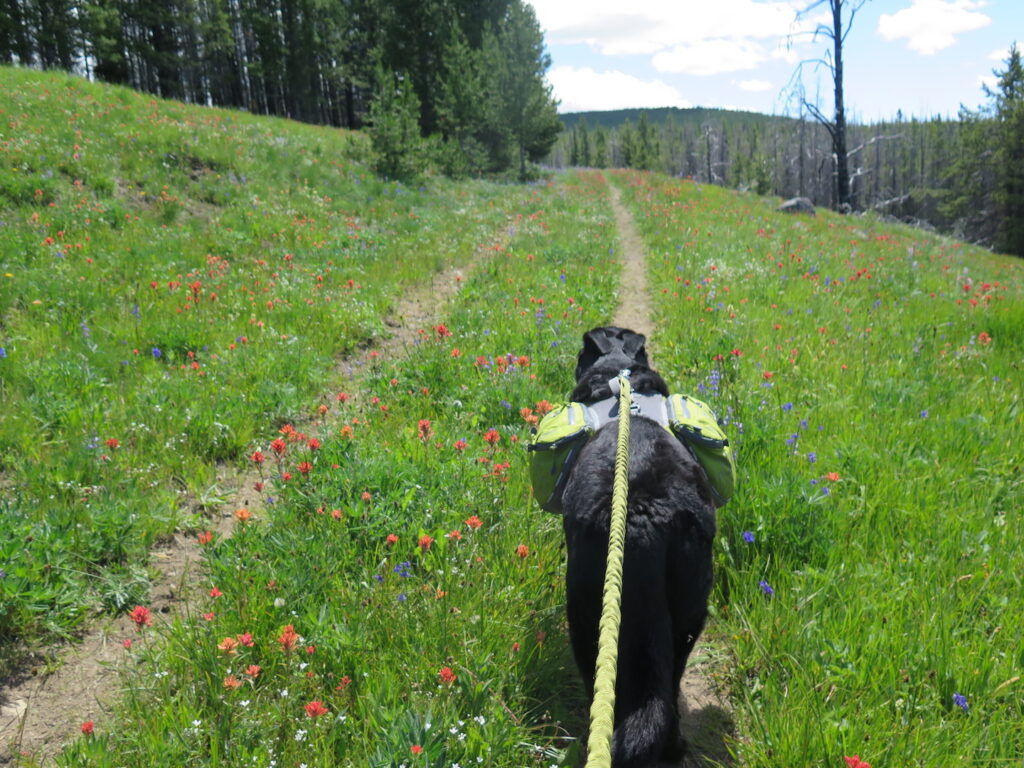
Trail regulations. Research where you’re going and make sure the trails are dog friendly. National Parks as well as the Enchantments and some areas of the Alpine Lakes don’t allow dogs. Certain times of the year dogs can be forbidden due to nesting animals. If you find yourself in a place where dogs aren’t allowed, respect the rules. There are lots of other places you can go with your pup!
Vaccines. It’s always important to make sure your dog is vaccinated, especially when going outdoors. Leptospirosis is an infectious disease caused by bacteria that live in marshy, muddy areas frequented by wildlife. Transmission can occur from a dog swimming in or drinking contaminated water. It has been reported in the Northwest so if you have a dog who frequently joins you hiking and backpacking, it might not be a bad idea to vaccinate them. Leptospirosis is a zoonotic disease, meaning it can be transmitted to humans.
Health & Fitness
Training. Just like people, dogs need to train up for big hikes and backpacking trips. It’s recommended that puppies wait until at least one year of age for tough physical outings due to growing bones. For young dogs, monitor their energy levels and take them on progressively longer hikes.
Now that my Jake dog is passing 12, I take him on easy flat hikes. As your dog ages, know their limits, keep the pace manageable, and be cautious about too much tough, rocky terrain.
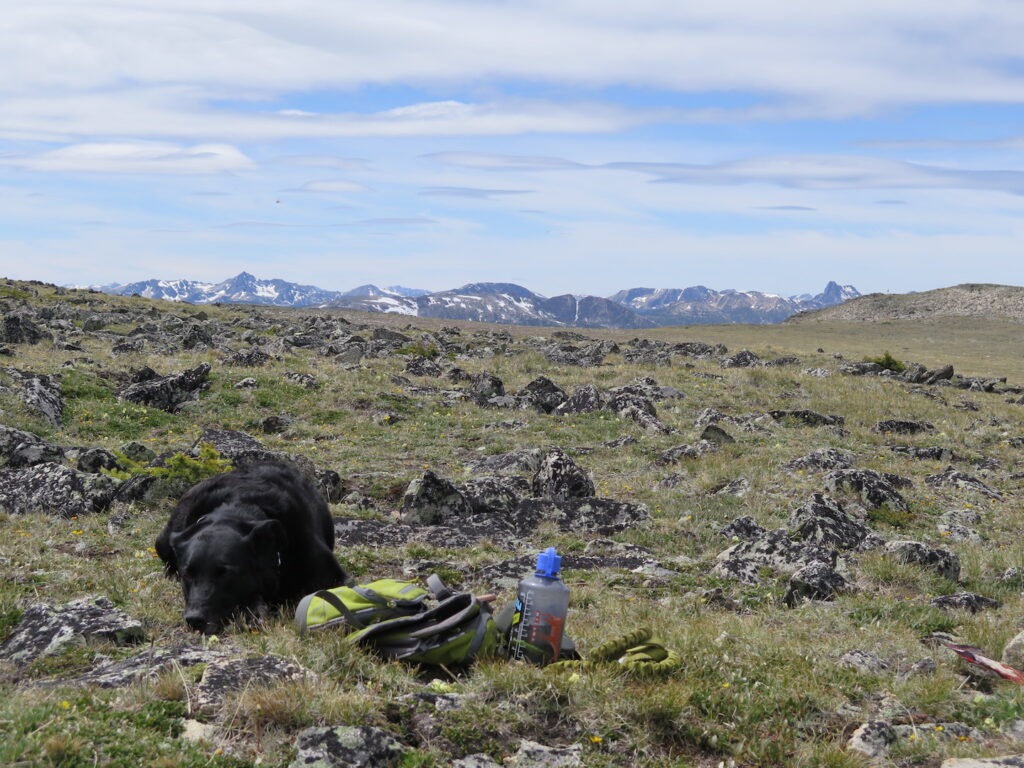
Know your dog’s abilities. How does your pup handle technical terrain? Is he able to boulder and scramble efficiently? Does he have a hard time with water crossings? Are logs tough for him? Take your dog out on lots of outings to get a feel for what they can and can’t do. If your route may have scrambling and boulder hopping, make sure your dog is up for it!
Water & Nutrition
Water intake. Most dogs should consume ½-1 ounce of water per pound of body weight per day. If you have a big dog, that’s a lot of water! On a moderately warm day, Jake can drink his way through two full-size Nalgenes in no time. Last summer we did a one night 8 mile backpack on a dry trail and I lugged along 6 liters of water for us both. Somehow Jake drank 4 and left me without enough water for my morning coffee… a tragedy!
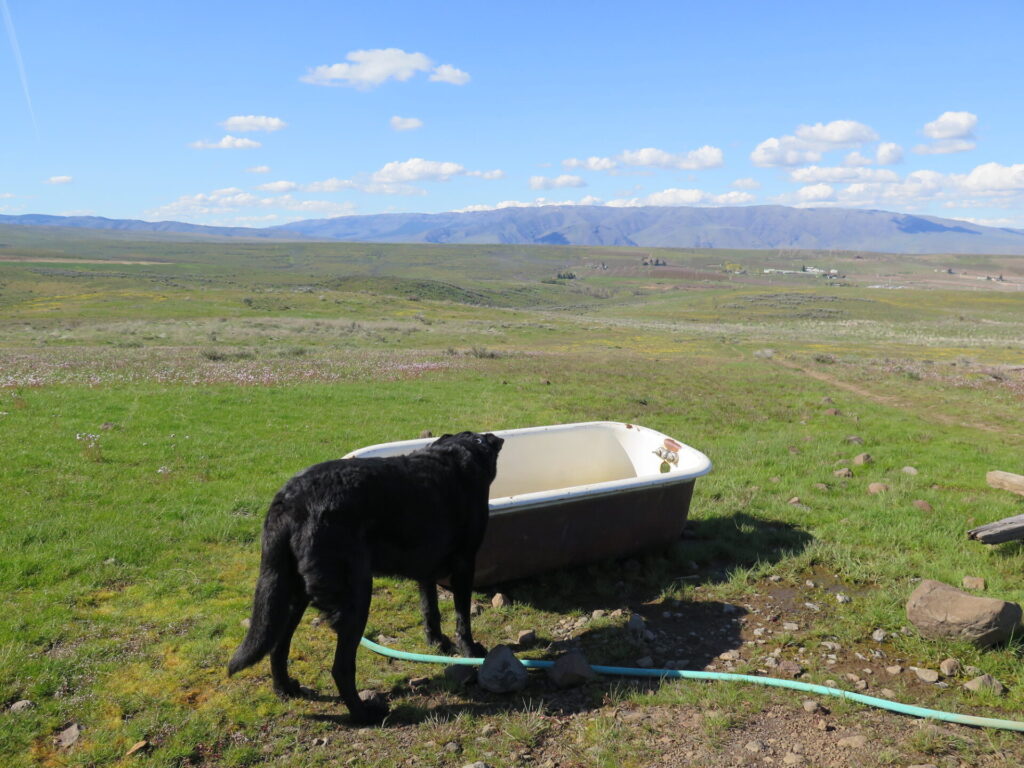
Water availability. Know what the water conditions are like where you’re going. If you’re in a dry area, that means you have to carry enough water for you and your dog, which can be a lot! Your dog should drink the same filtered water as you, eliminating possibilities of giardia or leptospirosis.
Trail snacks. If you’re hungry, chances are your dog is too! Dogs burn calories just like us so every time you stop for a snack, make sure your dog gets one! Bring along your dog’s favorite treats. Cycle Dog Trail Buddy treats are great for the trail and Jake approved! I also give him some jerkies and sometimes pack a rawhide for him at night.
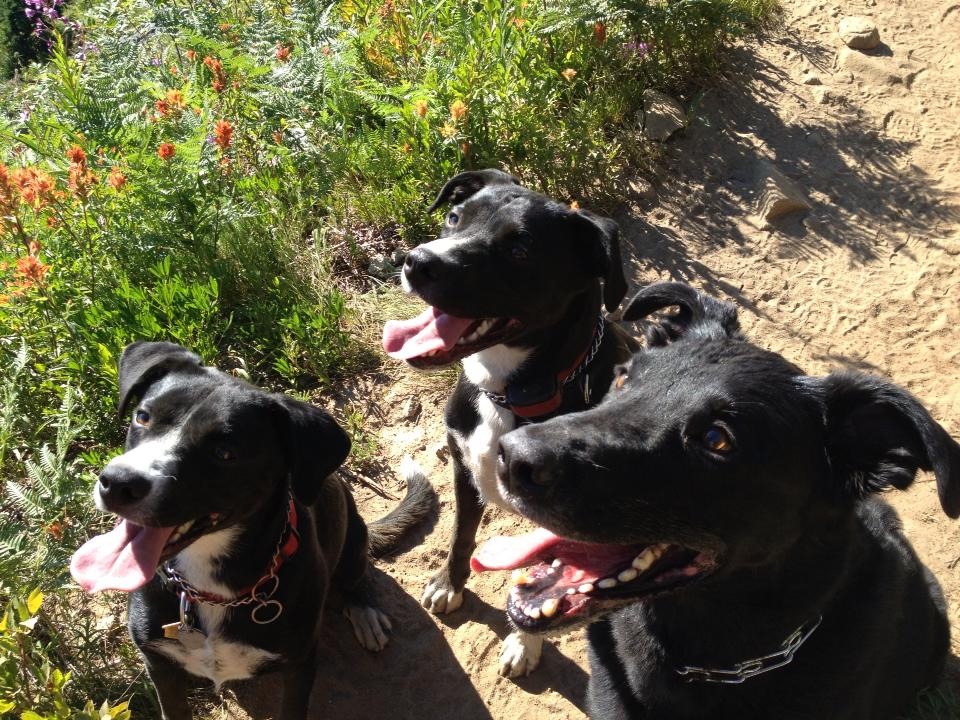
Sleeping
Logistics. Think about whether your dog will sleep inside or outside your tent. If outside, have a lead to secure your dog so he doesn’t go wandering. If inside, do a few trials at home to get your pup accustomed to the tent. Jake sleeps inside my tent with me and somehow the 85-lb lug fits into my tiny Big Agnus Fly Creek UL2 tent. It’s tight, but we make it work!
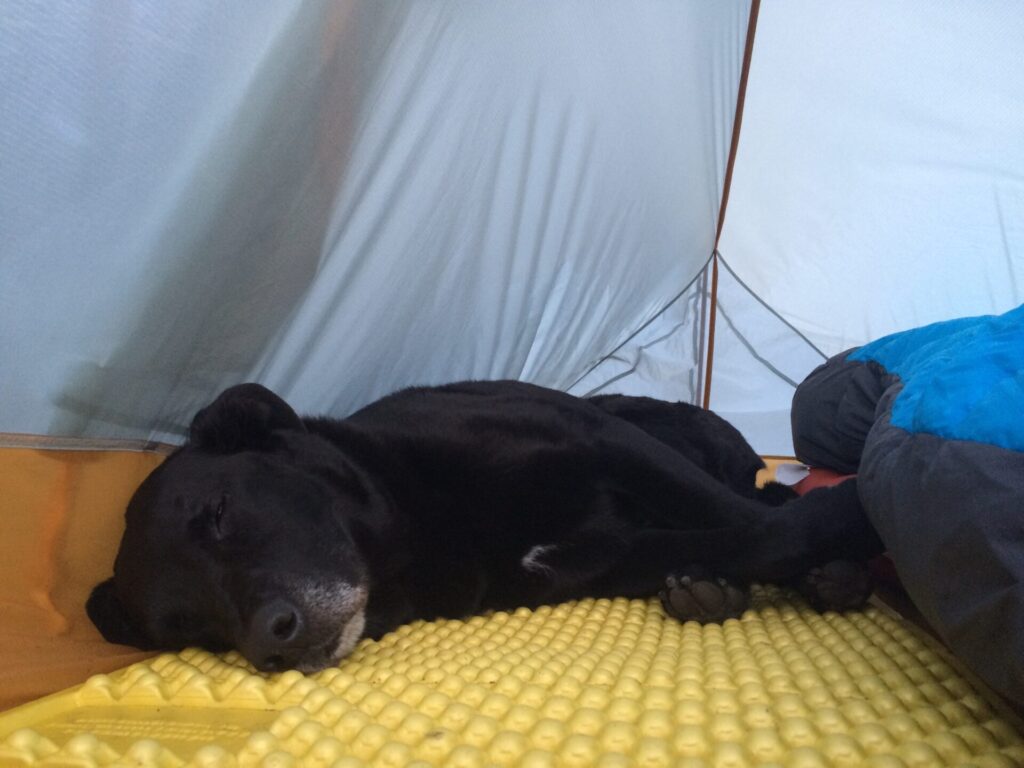
Padding and insulation. A sleeping pad can provide comfort for your dog and help protect your tent surface. I pack a Therm-a-rest Z Lite Sol pad for Jake and he uses it both inside the tent and for lounging outside. At 10 ounces, it’s light and easily straps to the side of my pack. Now that he’s older, I think he appreciates the comfort. If your dog lacks thick fur, a coat or insulating blanket may be necessary. Check out Ruffwear’s line up of dog beds. Their Highlands bed and sleeping bag are popular choices for dog owners!

Potential Hazards
Terrain. I’ve unfortunately had first-hand experience with both bloody paws and burned ones. Be aware of the terrain your dog is walking on and look for signs of paw discomfort like limping or licking. Volcanic rock and granite can quickly shred and blister paw pads and leave your pup unable to hike. On a sunny day, sand and rocks can heat up quickly and scorch their paws. Touch your hand or bare feet to the surface. If it’s too hot for you it’s definitely too hot for your dog!
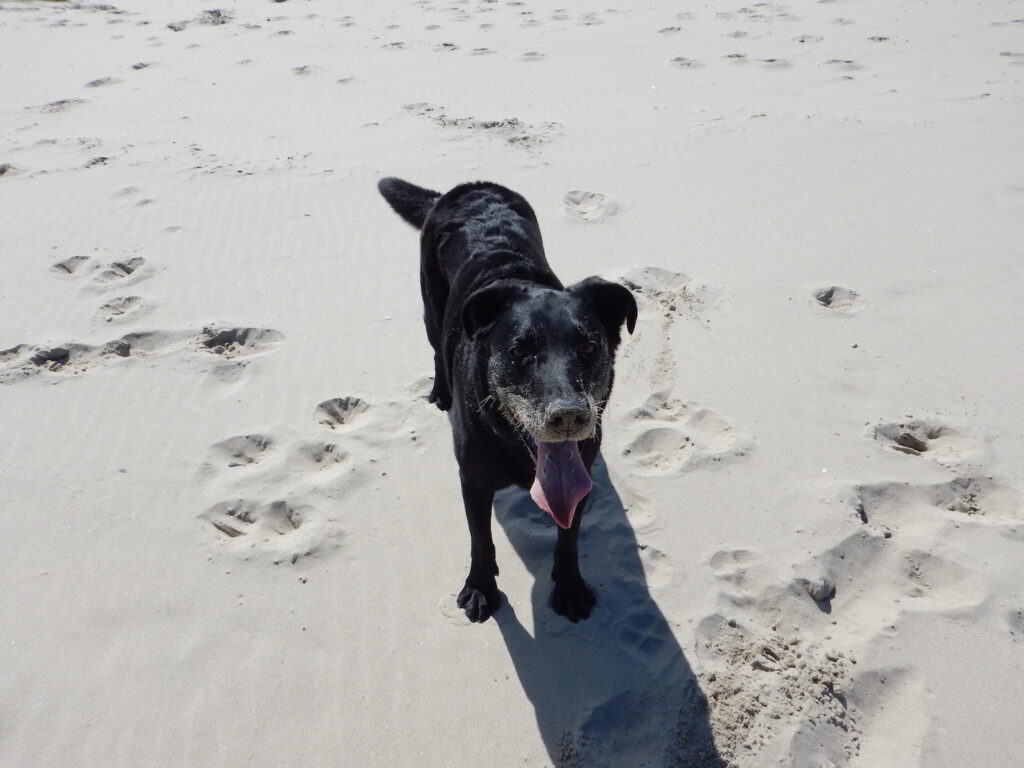
Snow and Ice. I’m lucky that my dog is a great snow dog but even so, snow and ice can ball up in between a dogs toes and cause bleeding. Cold weather also cracks their paw pads, much like it does to our hands and lips. I use Musher’s Secret in the winter, which is a balm that I can easily rub into Jake’s paws. I used to spend winters in the Methow Valley where temps were frequently below zero and Musher’s Secret worked wonders for keeping Jake’s paws happy and healthy!
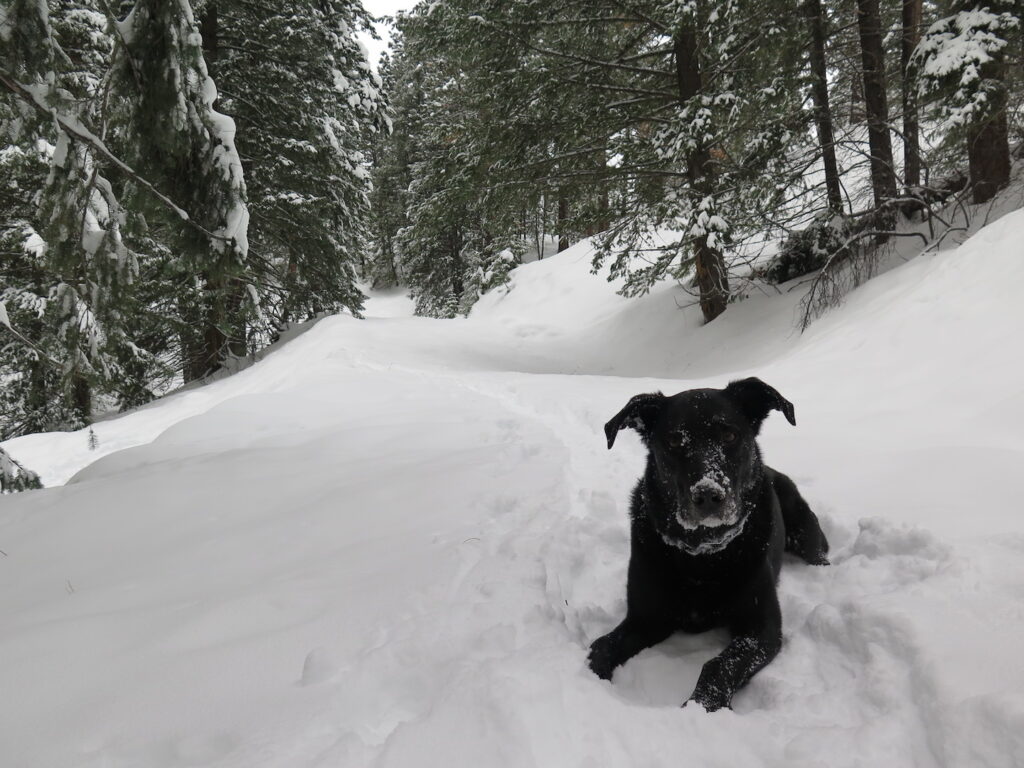
Plants. Cactus and burrs can easily injure your dog or become impossibly difficult to remove. If you’re in desert areas, keep an eye on what your dog is walking through and consider keeping them on leash to avoid unnecessary entanglements.
Grass Seed. No joke, grass seed has potential to damage skin and grow through vital organs if it takes root. I know it sounds crazy, but I’ve had first-hand experience with Jake getting grass seed in his ears that had to be removed by a vet. If your dog is running through tall grass, check him for seeds!
Other animals. If your dog has a chase instinct, training them well or keeping them on leash could be life-saving. The last thing you want is your dog chasing a huge black bear or other animal since they’ll likely bring it right back to you! Even horses can land lethal kicks if startled. Be familiar with your dog’s instincts and if you see signs of wildlife, keep your dog close and under your control.
Ticks and fleas. Ugh. That’s all I have to say about that! You can read my recent article about dealing with ticks, mosquitoes, and flies, but if you hike in areas with ticks, you should do a periodic and thorough check of your dog and consider using flea and tick repellants.
Water. Dogs love gross things. And sometimes they just can’t help rolling in stagnant water. Be aware though that this increases your dogs chances of getting bacterial infections like leptospirosis and even giardia.
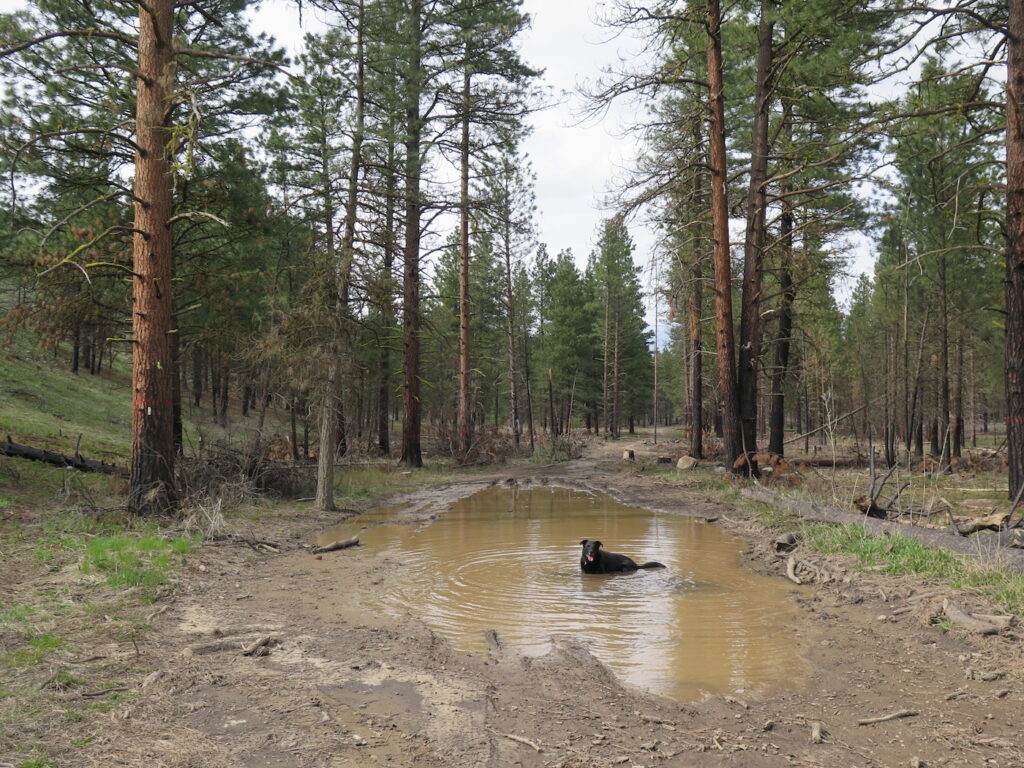
Gear Checklist
Typically when I backpack with Jake he carries his own pack and gear except his sleeping pad. Now that he’s older I keep his loads light. Most dogs can carry a maximum of 25-30% of their body weight depending on age, strength, and ability.

Backpack. If you decide to get a pack for your dog, know that some dogs take to it easily and others aren’t suited to it at all. Take the time to make sure the fit is correct and slowly get them accustomed to it if necessary. I guess I’m lucky because the first time Jake wore his pack he crashed it into a few trees, then just went about our hike like nothing was different!
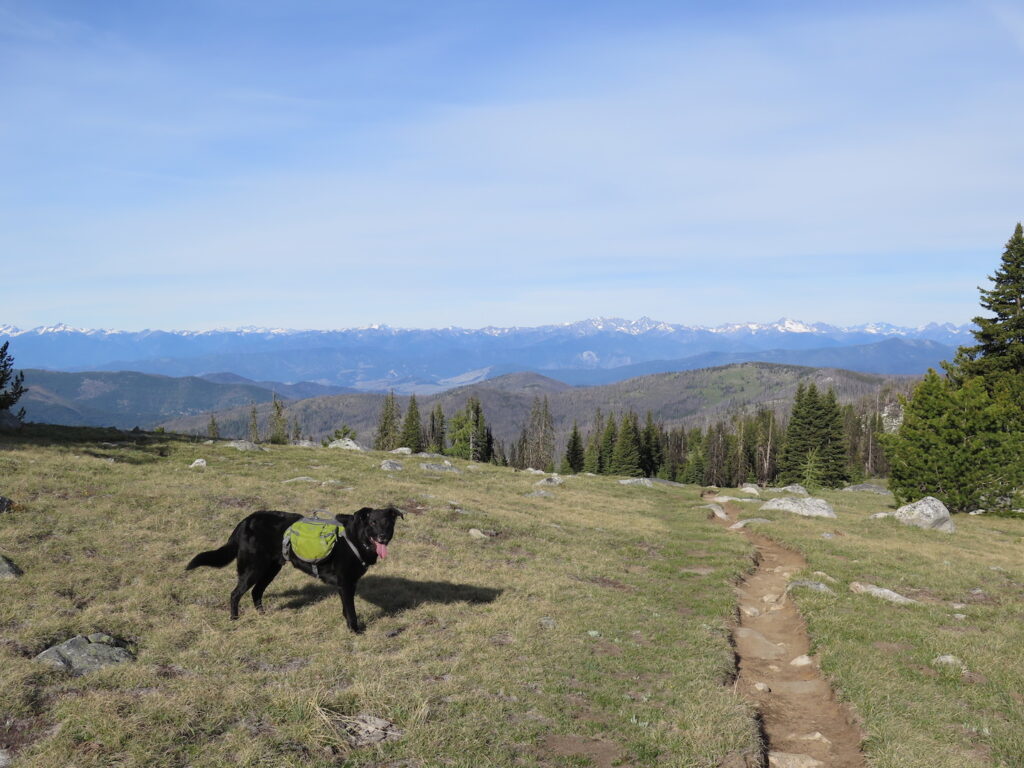
It’s amazing the pack has withstood all the abuse it’s taken over the last few years. I’d recommend it but I bought it at REI years ago and it’s long been discontinued. Ruffwear makes fantastic packs for dogs though, so if you’re in need, I suggest checking out their Approach or Palisades packs.
Bowl. I bring a single Ruffwear Quencher and use it for both food and water. It’s collapsible and foldable so you can easily stash it anywhere! Even with a large dog, the small size is great for backpacking.
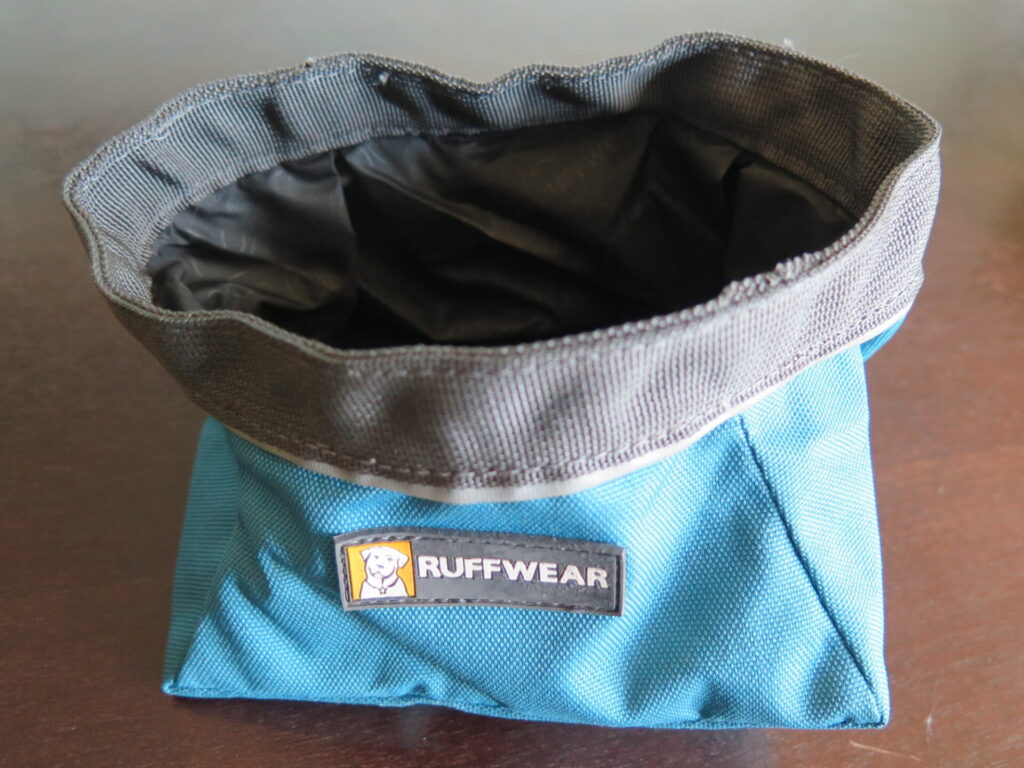
Food. A single day of Jake’s food fits conveniently into a quart-sized Ziploc bag, which makes it easy to ration his food. The ziploc bags also double as a food or water bowl if you fold down the sides. Don’t forget lots of trail treats!
Camp towel. I pack an REI camp towel exclusively for Jake. It’s compact, weighs under 3 ounces, and easy to stash in his pack. I never underestimate how much dirt and gross stuff Jake can roll in so having a towel to clean him off before he shares my tent makes my life so much cleaner!
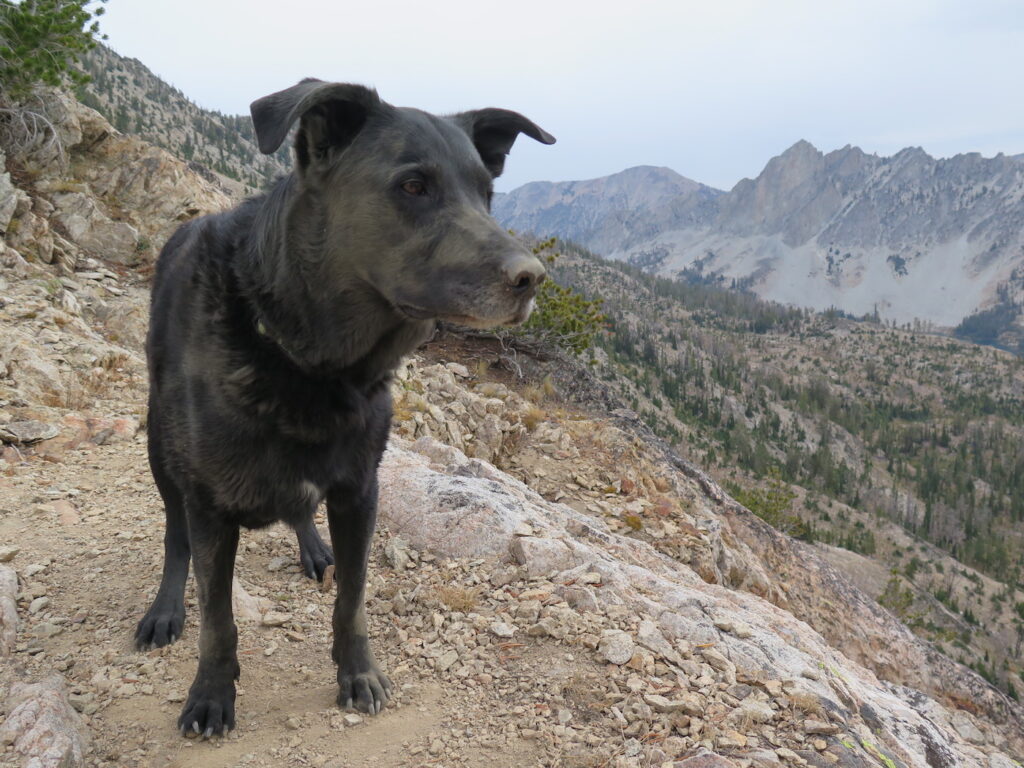
Collar and leash. My Ruffwear Roamer leash is a piece of gear I can’t live without, so much in fact, that I wrote a review about it earlier this year. Always bring a collar and leash for your dog. You never know when you’ll need to secure them.
Identification. Make sure your dog has some kind of identification tag. If for some reason they become lost in the backcountry, it makes it a lot easier for someone to get in contact with you if they find your pup.
First Aid. Most of the first aid gear you carry for yourself can also double for your dog though you should consider bringing a styptic pencil since it can quickly stop any bleeding that can happen as a result of a toenail injury.
I didn’t want this article to be too long so come back for part 2 which will cover first aid and treatments for common injuries your dog may face in the backcountry.
As far as other gear, some people swear by dog booties, though I’ve never used them for Jake. They can be handy if you travel on rough terrain or do winter ski touring with your dog. Just like other things, make sure to get your dog trained up and accustomed to them before use.
***
Backpacking with your dog is a wonderful experience, so if you’ve never done it, make it your mission to take your best friend out for an adventure this year! You and your pup will have the time of your lives! Jake dog says “Happy Trails!!?”
